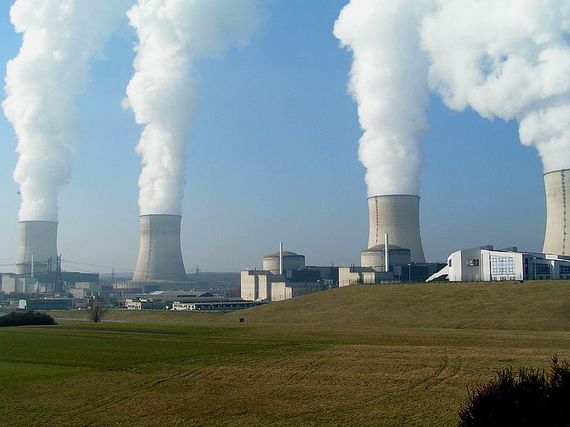Shankar Sharma

Shankar Sharma is a Power Policy Analyst based in Thirthahally, Karnataka. He can be contacted at shankar.sharma2005 @ gmail.com
A version of this paper was submitted at the people’s hearing on nuclear power policy at New Delhi on 22.8.2012
The debate as to whether nuclear power is a safe, suitable and essential option for India has been going on for many decades. While the proponents of the nuclear power have been offering many arguments in favour of the option, there have been any numbers of issues raised by those who consider it to be not a credible solution to meet the legitimate electricity requirements of our society on a sustainable basis. Whereas such a debate has been going on in other countries also, a densely populated and poor country like India should consider the nuclear option from the perspective of overall welfare of its communities.
Overarching principles on societal welfare
While the contentious issues on safety, sustainability and economics of nuclear power may not be settled in the near future there is an urgent need to look at nuclear power from the perspective of Precautionary Principle as adopted by the UN Convention on Biological Diversity (1992), and as per the spirit of our Constitution. The Precautionary Principle is an approach to uncertainty, and provides for action to avoid serious or irreversible environmental harm in advance of scientific certainty of such harm. According to this principle, those activities which are likely to pose significant risk to nature shall be preceded by an exhaustive examination; their proponents shall demonstrate that the expected benefits outweigh potential damage to nature, and where potential adverse effects are not fully understood, the activities should not proceed. Since the economic costs and risks associated with nuclear power to our society is not negligible, since many implications/consequences of a nuclear accident are not known yet, and since the total cost to the society of safeguarding the spent nuclear fuel for hundreds of years is not known, the basic need for additional nuclear power capacity can be and must be analysed objectively.
Major issues for the society with Nuclear power technology
Economic Issues
| Demands large tracts of forests and fertile land; huge capital and decommissioning costs; long term waste management costs; serious shortages of nuclear fuels in India; impact on food availability subsequent to accidents; true costs to society can be huge; massive costs to society subsequent to an accident |
Social Issues
| Peoples’ displacement and health; long term health implications; concerns in birth and genetic deformities; inter generational implications of nuclear waste; |
Environmental
Issues
| Mining related pollution; radiation emission during operation and from nuclear wastes for centuries ; radiation contamination of air, water and land; contamination of food products |
In the overall context of the societal welfare some fundamental questions need to be raised. The primary objective of a nuclear power station is the production of electricity. There are many benign ways of producing the electricity. Has our society harnessed all the benign alternatives available for us to the maximum extent? What is the efficiency of the usage of the existing electricity infrastructure in the country? Is there a scope for meeting all the legitimate demand for electricity of our society by a combination of these benign alternatives? Can an objective analysis of Costs V/S Benefits of a nuclear power project as compared to these benign options prove beyond reasonable doubt that it is in the best interest of our society?
Also, since the declared objective of nuclear power policy in the country is to meet the electricity demand of our communities, a dispassionate analysis of the very need for nuclear power and suitable alternatives in Indian context has become urgent. As of 30 June 2012 the nuclear power capacity in the country was 4,780 MW out of the total power capacity of 2,05,340 MW. Whereas this small percentage (2.32%) of nuclear power has been less than 5% of the total installed power capacity for decades, the time has come to rationally view the role of such a small percentage in the overall context of the power sector.
CEA data reveals that for the year 2011-12 the electrical energy demand was 936,568 MU, whereas the demand met was 857,239 MU, which meant a short fall of 8.5%. Similarly, for this period the peak power demand was 130,250 MW and the demand met was 115,847 MW with resultant shortfall of 11%. The contribution of nuclear power during this period was 32,287 MU (3.4% of the total). Assuming 80% PLF and 10% auxiliary consumption the maximum power output by nuclear power sector during the peak demand period could be about 3,440 MW, though it could be much less if one or more reactors were not operating at that time. This works out to about 3% of the total power met during peak demand period.
With such a low share of electricity produced how critical has been the nuclear power to our society?
Between 2006-07 and 2011-12 the capacity utilisation factor of the nuclear power plants around the country has varied between 50% and 71% of the installed capacity, as per NPCIL website data. RAPS units 1 & 2 have been de-rated to 100 MW and 200 MW respectively as compared to original designed capacity of 220 MW each.
Nuclear power authorities had promised a much larger share of nuclear power in the country. Dr. Homi J Bhabha had announced that there would be 8,000 MW of nuclear power in the country by 1980. By 1962, the prediction went upto 20,000 – 25,000 MW by 1987, and by 1969 the AEC predicted that by 2000 there would be 43,500 MW of nuclear generating capacity.
The reality has been quite different. Installed nuclear power capacity was only 4,780 MW in mid-2012. The difficulties faced by the nuclear power sector in meeting its own capacity addition target since independence has to be kept in proper perspective before we plan for additional power plants. There have also been issues with the reliable supply of nuclear fuel. The Integrated Energy Policy (IEP) has estimated that the Uranium reserve in the country can support only about 10,000 MW of nuclear power capacity. If the country were to rely on import of nuclear fuel and technology, the energy security becomes a major issue.
 “It’s the most inspirational work that I’m doing…this is an inspirational and aspirational effort…at the heart of it is love of place and energy democracy.” Mariel Nanasi and the citizens of Santa Fe, NM, are exploring the economic and environmental benefits of more local and locally-controlled energy production. Is their city ready to take the lead?
“It’s the most inspirational work that I’m doing…this is an inspirational and aspirational effort…at the heart of it is love of place and energy democracy.” Mariel Nanasi and the citizens of Santa Fe, NM, are exploring the economic and environmental benefits of more local and locally-controlled energy production. Is their city ready to take the lead?








